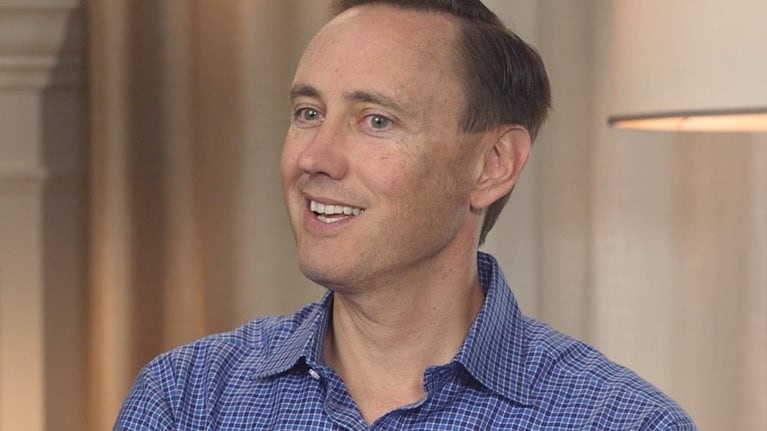Veronica Wu has been in on the ground floor for many of the dramatic technology shifts that have defined the past 20 years. Beijing-born and US-educated, Wu has worked in top strategy roles at a string of major US tech companies—Apple, Motorola, and Tesla—in their Chinese operations. In 2015, she was brought on as a managing partner to lead Hone Capital (formerly CSC Venture Capital), the Silicon Valley–based arm of one of the largest venture-capital and private-equity firms in China, CSC Group. She has quickly established Hone Capital as an active player in the Valley, most notably with a $400 million commitment to invest in start-ups that raise funding on AngelList, a technology platform for seed-stage investing. In this interview, conducted by McKinsey’s Chandra Gnanasambandam, Wu explains the differences between the tech-investment landscape in China and the United States and describes how Hone Capital has developed a data-driven approach to analyzing potential seed deals, with promising early results.
The Quarterly: Tell us a little bit about the challenges you faced in the early days of Hone Capital and how you came upon AngelList.
Veronica Wu: When CSC Group’s CEO, Xiangshuang Shan, told me he wanted to build an international operation, I had never done venture capital before. I just knew what they did and how hard it is to get into the VC space in Silicon Valley. There have been very few examples of outside capital that successfully entered the Valley. It’s partly an issue of credibility. If you’re an entrepreneur who’s trying to build your business, how do you know a foreign firm will be there in the next round, whereas people here in the Valley have already built a track record of trust.
The question for us became, “How do we access the top deals so that we can build that network of trust?” I was very fortunate that an ex-McKinsey colleague of mine told me about a platform called AngelList that might be an interesting hack into the VC scene. I soon learned more about how they were building an online ecosystem of top angel investors and a steady flow of vetted seed deals. The platform provided access to a unique network of superconnected people—we would not have known how to reach many of them, and some would not even have considered working with us for a very long time, until we were more established. So we saw AngelList as an opportunity to immediately access the VC community.
Stay current on your favorite topics
We also saw the huge potential of the data that AngelList had. There’s not a lot of visibility into early seed deals, and it’s difficult to get information about them. I saw it as a gold mine of data that we could dig into. So we decided to make a bet—to partner with AngelList and see if it really could accelerate our access to top-quality deals. And so far, so good; we’re very pleased. We’ve seen tremendous growth in the number of deals. So when we started, we’d see about 10 deals a week, and now it’s close to 20. On average, though, I’d say we just look at 80 percent of those deals and say no. But the diversity of deals that AngelList’s team has built is pretty incredible.
The Quarterly: How did you construct your machine-learning model? What are some interesting insights that the data have provided?
Veronica Wu: We created a machine-learning model from a database of more than 30,000 deals from the last decade that draws from many sources, including Crunchbase, Mattermark, and PitchBook Data. For each deal in our historical database, we looked at whether a team made it to a series-A round, and explored 400 characteristics for each deal. From this analysis, we’ve identified 20 characteristics for seed deals as most predictive of future success.
Based on the data, our model generates an investment recommendation for each deal we review, considering factors such as investors’ historical conversion rates, total money raised, the founding team’s background, and the syndicate lead’s area of expertise.
One of the insights we uncovered is that start-ups that failed to advance to series A had an average seed investment of $0.5 million, and the average investment for start-ups that advanced to series A was $1.5 million. So if a team has received a low investment below that $1.5 million threshold, it suggests that their idea didn’t garner enough interest from investors, and it’s probably not worth our time, or that it’s a good idea, but one that needs more funding to succeed. Another example insight came from analyzing the background of founders, which suggests that a deal with two founders from different universities is twice as likely to succeed as those with founders from the same university. This backs up the idea that diverse perspectives are a strength.
The Quarterly: Have you ever had a deal that your team was inclined to pass on, but the data signaled potential that made you reexamine your initial conclusions?
Veronica Wu: We actually just recently had a case where our analytics was saying that there was a 70 or 80 percent probability of success. But when we had originally looked at it, the business model just didn’t make sense. On paper, it didn’t look like it could be profitable, and there were many regulatory constraints. Nevertheless, the metrics looked amazing. So I said to the lead investor, “Tell me more about this deal and how it works.”
He explained that these guys had figured out a clever way to overcome the regulatory constraints and build a unique model, with almost zero customer-acquisition cost. So, we combined machine learning, which produces insights we would otherwise miss, with our human intuition and judgment. We have to learn to trust the data model more, but not rely on it completely. It’s really about a combination of people and tools.
The Quarterly: What has your early performance looked like, using your machine-learning model?
Veronica Wu: Since we’ve only been operating for just over a year, the performance metric we look at is whether a portfolio company goes on to raise a follow-on round of funding, from seed stage to series A. We believe this is a key early indicator of a company’s future success, as the vast majority of start-up companies die out and do not raise follow-on funding. We did a postmortem analysis on the 2015 cohort of seed-stage companies. We found that about 16 percent of all seed-stage companies backed by VCs went on to raise series-A funding within 15 months. By comparison, 40 percent of the companies that our machine-learning model recommended for investment raised a follow-on round of funding—2.5 times the industry average—remarkably similar to the follow-on rate of companies selected by our investment team without using the model. However, we found that the best performance, nearly 3.5 times the industry average, would result from integrating the recommendations of the humans on our investment team and the machine-learning model. This shows what I strongly believe—that decision making augmented by machine learning represents a major advancement for venture-capital investing.
The Quarterly: What advice would you give to other Chinese firms trying to build a presence in Silicon Valley?
Veronica Wu: I would say success very much depends on delegating authority to your local management team. I see Chinese funds all the time that are slow in their decision making because they have to wait for headquarters. It makes them bad partners for a start-up, because, as you know, in the Valley the good start-ups get picked up very quickly. You can’t wait two months for decisions from overseas. They’ll just close the round without you because they don’t need your money. Some people coming to the Valley fall prey to the fallacy of thinking, “Oh, I have lots of money. I’m going to come in and snap up deals.” But the Valley already has lots of money. Good entrepreneurs are very discerning about where their money comes from and whether or not a potential investor is a good partner. If you can’t work with them in the manner they expect you to, then you’re going to be left out.
The Quarterly: What advice would you give to US-based founders trying to work with Chinese VC firms?
Veronica Wu: Founders should be careful not to accept Chinese money before they understand the trade-offs. Chinese investors tend to want to own a big part of the company, to be on the board, and to have a say in the company. And it might not be good for a company to give up that kind of power, because it could dramatically affect the direction of the company, for good or bad. It’s smart to insist on keeping your freedom.
That said, Chinese investors do know China well. Founders should be open to the advice of their Chinese investors, because it is a different market. Consumer behavior in China is very different, and that is why big foreign consumer companies often fail when they try to enter the country. One example is Match.com here in the United States. They have a model that’s done pretty well here, but it didn’t work so well in China. A Chinese start-up did the same thing, but they changed the business model. They made it so that you can find information about the people you’re interested in, but you have to pay, maybe 3 or 5 renminbi, if you want to know more. Now, Chinese consumers don’t like not knowing what they’re paying for, but they’re actually much more spontaneous spenders when they see what they’re going to get immediately. It’s a very small amount of money, so they become incredibly insensitive to cost, and they don’t realize how often they’re logging in and how much money they’re spending. When you look at the average revenue per user for the Chinese company, it was actually higher than Match.com’s. So it’s about understanding that you’re going to need to translate your model to fit the consumer preferences and behavior in China, and working with a firm that has firsthand knowledge of that market can be very helpful.
The Quarterly: How would you say the tech-investment scene in China differs from Silicon Valley?
Veronica Wu: Venture capital is a very new thing for China, while the US has a much more mature model. So that means the talent pool isn’t yet well developed in China. Early on, what you saw was a lot of these Chinese private-equity firms looking at the metrics, seeing that a company was going to do well, and using their relationship and access to secure the deal and take the company public, getting three to five times their investment. In that decade from 2000 to 2010, there was a proliferation of deals based on that model. But most of the Chinese firms didn’t fully understand venture capital, and many of the great deals from 2005 to 2010 got gobbled up by US venture firms. Alibaba and Tencent, for instance, are US funded. Almost every early good deal went to a conglomerate of foreign venture capitalists.
I think people in China are still learning. Two years ago, everyone wanted to go into venture capital, but they really didn’t have the skills to do it. So start-ups were valued at ridiculous prices. The bubble was punctured a little bit last year because people realized you can’t just bet on everything—not every Internet story is a good opportunity.

The ‘tech bubble’ puzzle
The Quarterly: Venture capital has unleashed great forces of disruption—so why has its own operating model remained largely unchanged?
Veronica Wu: It’s the typical innovator’s dilemma—the idea that what makes you successful is what makes you fail. When I was at Motorola, the most important thing about our phone was voice quality, avoiding dropped calls. At the time, antenna engineers were the most important engineers at any phone company. In 2005, one of our best antenna engineers was poached by Apple. But he came back to Motorola after only three months. He said, “Those guys don’t know how to do a phone.” At Motorola, if an antenna engineer said that you needed to do this or that to optimize the antenna, the designer would change the product to fit the antenna. Of course, at Apple, it was exactly the opposite. The designer would say, “Build an antenna to fit this design.” The iPhone did have antenna issues—but nobody cared about that anymore. The definition of a good phone had changed. In the venture-capital world, success has historically been driven by a relatively small group of individuals who have access to the best deals. However, we’re betting on a paradigm shift in venture capital where new platforms provide greater access to deal flow, and investment decision making is driven by integrating human insight with machine-learning-based models.



